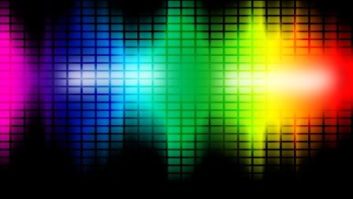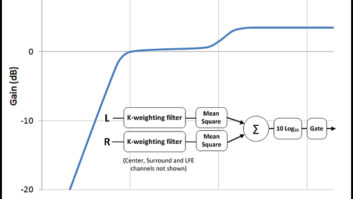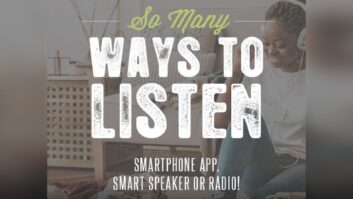
Many people do not understand audio processing. People do not listen to your station because you have incredible audio processing, they come for the desired content. That said, audio processing adds to the listening experience, making your audience comfortable and giving them the ability to best enjoy the content.
Naturally, audio processing for broadcast radio should be different from the processing of streaming audio.
For broadcast radio you want to be the loudest on the dial so that when a potential listener hits scan, the station stands out. It almost works as a “stop sign,” demanding the listener pause and pay attention.
This will momentarily capture the audience, but they will stay on the channel for the content. Here audio processing helps create a comfortable audio atmosphere that partners with the content to keep your audience.
For streaming radio, which reaches listeners on their computer, smartphone, or smart speaker, you do not need to be the loudest. As I have said many times, “Clarity beats loudness all the time.” With streaming, the audio should be clean so that the intended instrumentation can be heard. A flute should sound like a flute.

I am not saying compression or expansion should not be used, but they should be used for the intended playback. Process your stream for your stream; process your over-the-air broadcast for the radio.
Use music you are familiar with and that has a good range to calibrate the processing. I tend to use music by Linda Ronstadt because she has a good selection that ranges across many genres. In addition, a woman’s voice tends to have more range than a male voice.
And please remember that audio processing must partner with the content to increase how long your listener stays, and we all want larger total listener hours (TLH).
Loudness guidelines
As far as loudness goes, I highly recommend the new Audio Engineering Society Technical Document AESTD1008.1.21-9: Recommendations for Loudness of Internet Audio Streaming and On-Demand Distribution. This document, released in September 2021, supplies you with all the knowledge needed for loudness and much more.
The key point of the technical document is to keep your loudness consistent across the music, the DJ, the commercials and the station promos. You do not want to invite the listener to adjust their volume. If they are adjusting the volume, it is just as easy for them to change to another stream or turn off the player.
[Read more Radio World articles by David Bialik.]
This document took the AES’s Technical Committee for Broadcast and Online Delivery (which I co-chair) more than two years to write, but it is available as a free download (which matches most broadcast budgets).
For radio streamers, the most important part of the recommendations is Table 2 on page 6 (reproduced below). This provides recommended loudness levels in Loudness Units with respect to digital Full Scale (LUFS) by format.
| Format | Distribution Integrated Loudness |
| News/Talk | −18 LUFS |
| Pop Music | −16 LUFS |
| Mixed Format | −17 LUFS |
| Sports | −17 LUFS |
| Drama | −18 LUFS |
The document recommends audio be normalized, which should not affect dynamic range. Normalization adjusts the loudness of content to match a desired Distribution Loudness by applying uniform attenuation or gain.
I suggest broadcasters use a loudness meter compliant with the ITU-R BS.1770 standard, such as the Orban Loudness Meter. This is a free download, and I believe broadcasters will find it to be an essential tool that provides not only BS.1770 measurements, but also CBS Labs measurements, a VU meter and a PPM meter. I find the addition of the other meters makes your transition to this new meter easier to understand.
David Bialik is a consultant who has held technical broadcast and streaming positions for companies like Entercom, CBS Radio, Bloomberg and Bonneville. He is co-chair of the AES Technical Committee for Broadcast and Online Delivery and chair of the Metadata Usage Working Group of the National Radio Systems Committee. Contact him at [email protected] or 845-634-6595.












